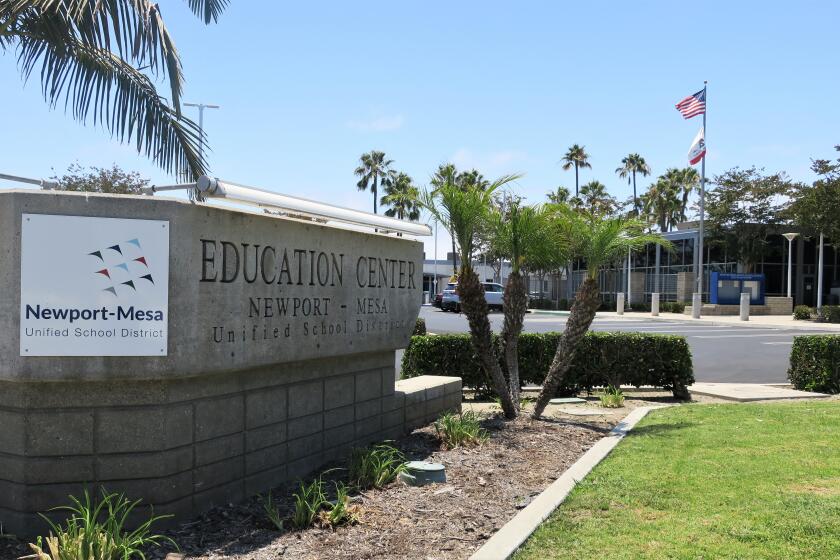Water temps are a factor
Marine mammal experts may have realized why a large number of seals and sea lions are coming ashore weak and malnourished. The mammals are having a hard time catching fish due to a slight increase in the temperature of the ocean, said Dr. Richard Evans, the Pacific Marine Mammal Center veterinarian and medical director.
Experts are predicting an El Niño/La Niña weather pattern will begin to arrive through August, with higher global ocean temperatures already evident, according to data from the National Centers for Environmental Prediction.
“California sea lions, which don’t dive as deep as elephant seals and harbor seals, are having more trouble finding food. With warmer waters, the fish are swimming deeper and that’s where the problems seem to be coming in,” said Melissa Sciacca, a spokeswoman for the center.
Although it is only halfway through the year, the center has treated 213 animals — already 20 more than the total number they treated all of last year.
The influx in animals to the center has caused a 63% increase in the cost of food and medication for the seals and sea lions compared to 2008. The amount of time, manpower and space that is needed to care for the animals is also stretched thin due to the increase.
“Many of us are working until midnight, seven days a week,” Evans said. With so many animals under the center’s care, transferring them from day environment to night environment becomes quite a task.
“It creates a logistical nightmare. It’s a tremendous amount of work,” he said.
There is no definite reason yet as to why there has been such an increase in the mammal strandings; however, according to Evans, one of the reasons may be due to a small but substantial increase in the ocean temperature recorded this year. This causes problems with fish availability for the marine mammals. Seals and sea lions would have to dive deeper to reach colder waters in order to obtain their food, he said.
“Plankton, which fish eat, will go other places because they like cold water. As plankton move, fish move with it. It’s all part of an ecosystem,” he said.
Unfortunately, diving deeper to get food is not always an option for all marine mammals, Sciacca said.
The majority of the animals the center has taken in have had problems with malnutrition, but there has also been an increase in trauma cases. Because the animals have to search in other areas for food, they are venturing into areas they are not accustomed to and getting injured as a result, mammal center officials said.
“They are going after fish on hooks so there have been a lot of hook wounds. We’re also seeing a lot of bite wounds too because they are all scrapping over what food they can get,” Evans said.
While the reasons for the increase in strandings are still uncertain, the center’s goal of rehabilitating these animals remains clear. It encourages the public to call the center if they see any stranded mammal, but not to touch or go near the animal. According to federal law, once a seal or sea lion is on the beach, humans must back away at least 100 yards.
“You need to back away and call our center. We will make a decision on whether that animal needs intervention or not,” Evans said.
The increase in the animals being treated in the center this year has made it tougher financially to operate the center. The center receives support from event fundraisers and grants, but it depend on public donations for most of its funding.
“We’re open every day and people come see first hand the animals and what we’re dealing with and that encourages people to donate,” Sciacca said.
Because the center is one of only five licensed marine mammal rehabilitation centers in the state of California, and the only one in Orange County, a sudden increase in patients makes it more difficult to continue operations. But Sciacca and Evans said the center has received great support from the public and it is helping to ease the situation.
“We’re the quintessential grassroots organization. We have a tremendous public backing in this organization,” Evans said.
The center is located at 20612 Laguna Canyon Road. For more information, call (949) 494-3050.
For video of recent sea lion releases made by the Pacific Marine Mammal Center visit: www.youtube.com/watch?v=o8cBWcs6h80&feature;=related and www.youtube.com/watch?v=arSHOichI5k.
El Niño Facts
Weather forecasters are predicting an El Nino/La Nina weather pattern will arrive by August, bringing warmer ocean temperatures and raising the possibility of a major storm system over the coming months.
El Nino/La Nina is a global ocean-atmosphere phenomenon marked by temperature fluctuations in surface waters of the tropical Eastern Pacific Ocean.
The 1997-1998 El Nino phenomenon was responsible for the deaths of 21,706 in 27 countries.
El Nino storms of 1998 triggered numerous mudslides that destroyed dozens of houses on the California coast, brought multiple highway closures and $12.4 million in O.C. property damage.
All the latest on Orange County from Orange County.
Get our free TimesOC newsletter.
You may occasionally receive promotional content from the Daily Pilot.



